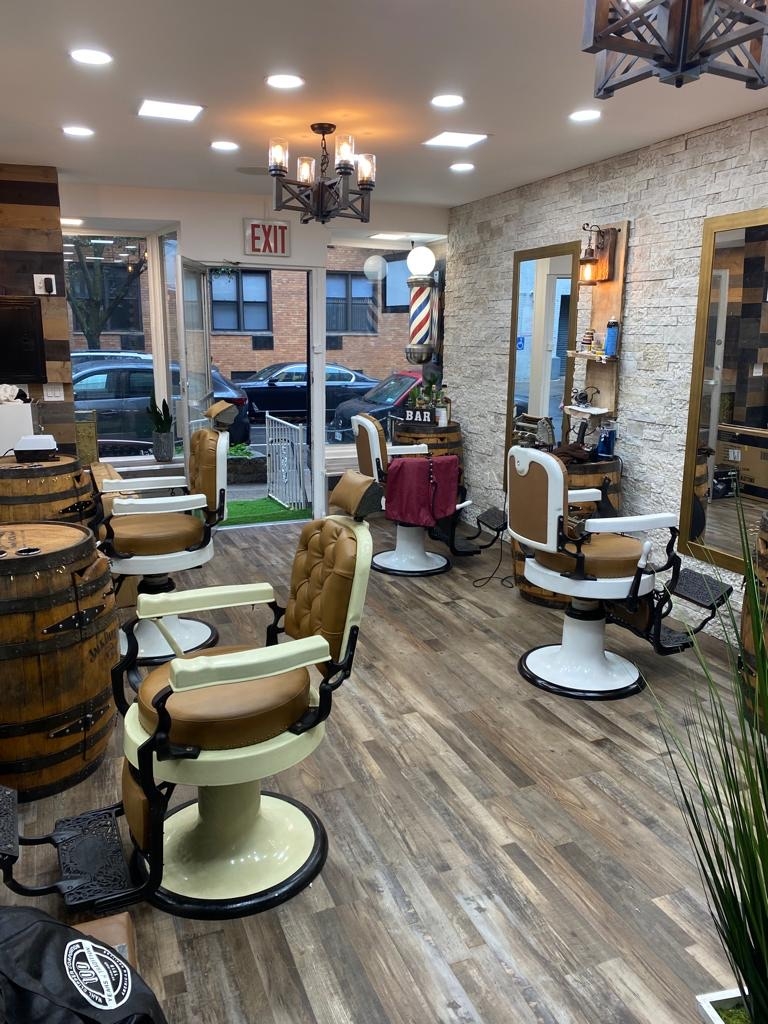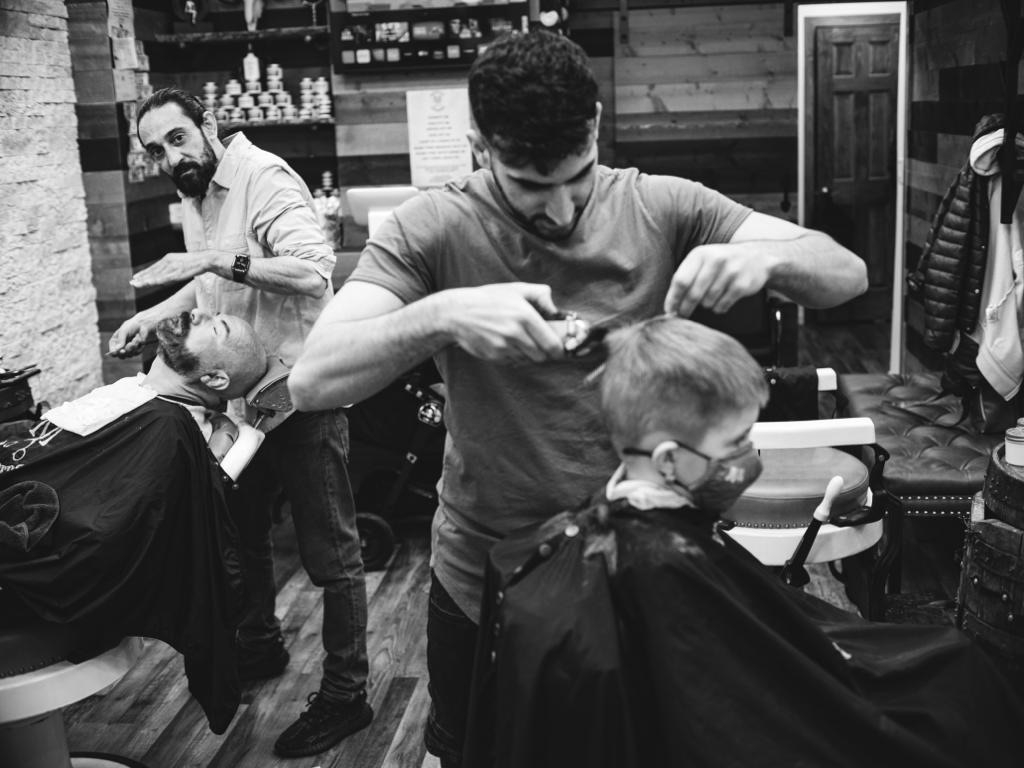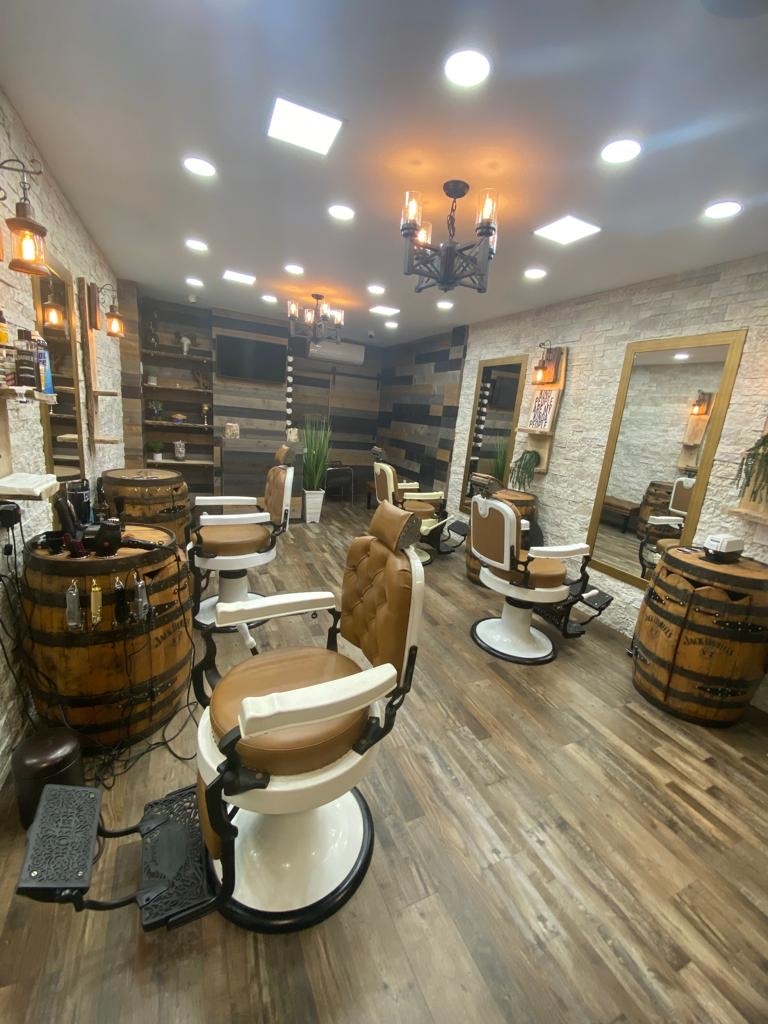

Hair thinning scissors differ from regular scissors used for cutting hair in their design and functionality. Thinning scissors have teeth on one blade that help to remove bulk from the hair, creating a softer, more blended look. This is in contrast to regular scissors, which have two straight blades for cutting hair evenly without thinning or texturizing.
Hair thinning scissors can be used on all hair types, including curly or thick hair. However, it is important to consider the amount of hair being thinned and the desired outcome. Thinning scissors are particularly useful for reducing volume in thick hair or adding texture to curly hair, but they should be used with caution to avoid over-thinning or damaging the hair.
In Modern Barber Trend Talks, Hayden Cassidy talks collaborations, authenticity, and what to watch… “I love a buzzcut. There are so many details that go into perfecting the haircut. To the eye it looks simple, but to perfect a buzzcut, it’s all about the details and execution. It’s like a secret skill.” 6 Things That The post Modern Barber Trend Talks: Hayden Cassidy appeared first on Modern Barber.
Posted by on 2024-03-08
There are different types of blades available for hair thinning scissors, such as single-sided or double-sided teeth, varying in terms of performance. Single-sided teeth are ideal for creating a softer, more natural look, while double-sided teeth are more aggressive and can remove more hair with each cut. The choice of blade depends on the desired result and the texture of the hair being thinned.

The recommended technique for using hair thinning scissors to achieve a natural-looking result is to start by sectioning the hair and working in small, thinning sections. Hold the scissors at a slight angle and gently close and open them while moving down the hair shaft. Avoid cutting too close to the scalp or making blunt cuts, as this can result in an unnatural appearance.
To keep hair thinning scissors in good condition for long-term use, it is important to regularly clean and oil the blades. After each use, wipe the blades with a clean cloth to remove any hair or product buildup, and apply a small amount of scissor oil to keep them lubricated. Store the scissors in a dry place to prevent rusting or dulling of the blades.

Hair thinning scissors can be used to create specific hairstyles, such as layers or texture, by strategically thinning out sections of the hair to add movement and dimension. Thinning scissors are particularly useful for blending layers seamlessly or adding texture to blunt cuts. They can also be used to remove bulk from thick hair or create a more feathered look.
Potential risks or side effects associated with using hair thinning scissors include damage to the hair or scalp if not used properly. Over-thinning the hair can result in uneven or choppy layers, while cutting too close to the scalp can cause irritation or injury. It is important to practice caution when using thinning scissors and seek professional guidance if unsure of the proper technique to avoid any negative outcomes.

When selecting the appropriate aftershave for clients' varying skin types, it is crucial to consider factors such as sensitivity, dryness, oiliness, and any specific skin conditions they may have. For clients with sensitive skin, it is advisable to opt for alcohol-free aftershaves that contain soothing ingredients like aloe vera or chamomile. Those with dry skin may benefit from aftershaves with hydrating properties such as glycerin or hyaluronic acid. Clients with oily skin may prefer aftershaves that are lightweight and non-comedogenic to prevent clogged pores. Additionally, individuals with specific skin concerns like acne or razor burn may benefit from aftershaves containing salicylic acid or tea tree oil to help combat inflammation and bacteria. By considering these factors and selecting aftershaves tailored to each client's unique skin type, you can ensure they receive the most suitable post-shave care.
The tension screw on barber shears plays a crucial role in determining the cutting performance and overall functionality of the shears. This screw allows the barber to adjust the tension between the blades, which directly impacts the smoothness and precision of the cuts. By tightening or loosening the tension screw, barbers can customize the shears to their preferred cutting style and technique. Proper tension adjustment ensures that the blades meet and cut hair evenly, reducing strain on the hands and wrists during prolonged use. Additionally, maintaining the correct tension helps prolong the lifespan of the shears by preventing premature wear and tear. Overall, the tension screw is a key feature that enhances the performance and longevity of barber shears.
To properly calibrate trimmer blades for precision cutting, start by ensuring the blades are clean and free of any debris that could affect their alignment. Use a blade alignment tool to check the parallelism of the blades and make any necessary adjustments to ensure they are perfectly aligned. Check the tension of the blades to ensure they are securely in place and adjust as needed. Use a blade sharpener to sharpen the blades if necessary, as dull blades can lead to imprecise cuts. Test the blades on a scrap piece of material to ensure they are cutting accurately before using them on your desired material. Regular maintenance and calibration of trimmer blades are essential for achieving precise and clean cuts.